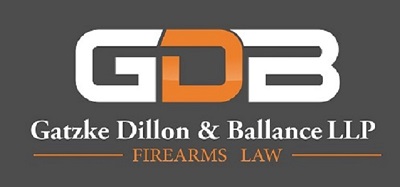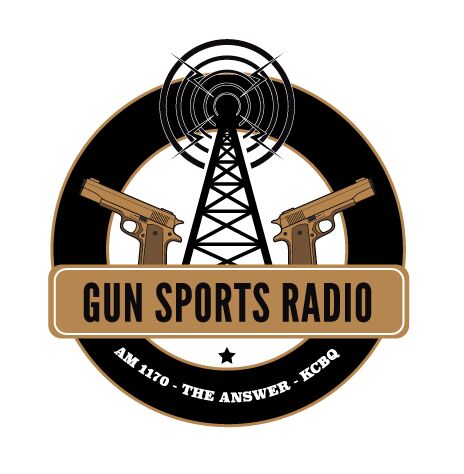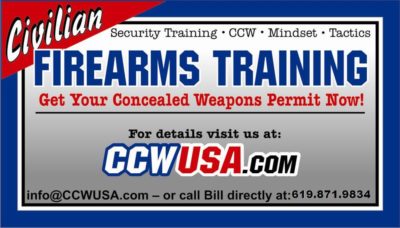“What the heck is going on with gun laws in the People’s Republic of California!?
There’s too much confusion out there, so grab your beverage of choice and dive in to this [hopefully] helpful s’plainer.
NOTE: This article assumes that you may want to do some catching up, that you’ve been under a rock since Gunpocalypse, or that you have no idea that Lt. Gov. Gavin Newsom’s Proposition 63 ammunition statutes were the law, but then some weren’t because of a bill that was passed before it. (Read on for more on that.)
And much will change going forward, either in DOJ regulations or in the courts, or both. So this is not the end. But, perhaps, this is the end of the beginning. Onward!
Q: What are “regulations”, anyway? Doesn’t the Legislature make laws?
A: Regulations are rules — a.k.a. “administrative laws” — that are promulgated by executive branch officers or agencies under the authority of statutes.
Statutes are laws that are enacted by the Legislature — which is found, surprisingly enough, in the legislative branch — and are either signed into law, allowed to pass into law without a signature, or become law with a “veto override” vote of the Legislature.
[If you’re still interested in learning more about this process — and who isn’t? — see Sec. IV of the California Constitution, here.]
In California, permanent regulations are published in the California Code of Regulations, which you can access here. The gun stuff is mostly found in Title 11, Division 5.
Unless the Legislature (or the people, in initiative statutes) say otherwise, regulations — or “rulemakings”, get it? — generally must follow the California Administrative Procedure Act (“APA”) process, codified at Cal. Government Code section 11340, et seq.
The Office of Administrative Law (“OAL”) is — according to them, anyway — an [executive branch] state agency which “ensures that agency regulations are clear, necessary, legally valid, and available to the public.” You might or might not agree with that description. OAL has a handy little FAQ about the State’s rulemaking process here.
Q: But isn’t everything Governor Jerry Brown’s fault?
A: Well, a lot of things are Gov. Brown’s fault. But Gov. Brown’s involvement in gun laws is generally limited to signing or vetoing bills passed by other people — legislators — in the Legislature. Though signing gun control bills into law is bad, so that would be his fault. And OAL does, ultimately, work for him, too.
So, to be fair, gun laws are primarily the Legislature’s fault, but anti-gun governors have either signed gun control bills or actively lobbied for them. So you can and should blame them for that.
For example, Republican governors like Friend Richardson, Ronald Reagan, George Deukmejian, and Pete Wilson, as well as Democrats like Gray Davis, Arnold Schwarzenegger, and Jerry Brown, have all either signed or promoted gun control laws, or both.
Wait — Schwarzenegger was a Republican, you say? Huh. Does anybody else know this!?
Q: What’s the difference between terms like “may” and “shall?”
A: It’s hard to imagine any California gun owner who doesn’t already know the difference between “may” and “shall” — have you hugged your “may-issue” sheriff lately? — but just in case, here it goes…
“Shall” generally signals a mandate, or duty, of someone to do something.
“May” generally indicates that someone can do something, but doesn’t necessarily have to.
“Shall not” means….the opposite of shall. (Who saw that coming?)
Q: Where can I go read the laws for myself?
A: Swing over — or however you browse for stuff on the Interwebz these days — to the California Legislature’s handy Legislative Information Web site and click, search, or browse away.
(Here’s a direct link to the Penal Code.)
You can also use it to look up other things, like many bills.
Q: What’s the easiest way to find out what California DOJ is up to?
A: Of course, we’d love for you to sign up for our e-mail alerts to stay up to date on gun bills, regulations, and lawsuits here.
And you might want to bookmark our California DOJ Regulation Watch and BulletButtonBan.com pages, two resources we established to help people keep track of all of these new gun regulations.
And you can always —
Follow FPC on Facebook
Follow FPC on Twitter
and Follow FPC on Instagram
You can always find opportunities to sound off at FPC’s Take Action grassroots activism tools, here.
And, you can also follow the “fun” — at least, what DOJ wants you to see — at the Attorney General’s firearms regulation Website here.
Q: What do you mean, “what DOJ wants you to see?” Aren’t these things supposed to be public?
A: Well, yes — but that doesn’t stop DOJ from trying to play games and keep people in the dark.
In fact, we filed a lawsuit — DeLuz, et al. v. DOJ — earlier this year to make sure that we (and you) have access to public records and information that DOJ has about its firearm regulations, etc.
Q: So, can I still buy ammo after January 1?
A: Yes, but differently.
Beginning 1/1/18, sales or delivery of ammunition [to a buyer/transferee] must generally be processed by a DOJ-licensed ammunition vendor in a face-to-face transaction.
Q: Didn’t they ban “mail order” and Internet-purchased ammunition?
A: Sort of, but not quite.
With a few exceptions, the new ammunition laws say that “that ammunition may be purchased or acquired over the Internet or through other means of remote ordering if a licensed ammunition vendor initially receives the ammunition and processes the transaction in compliance with this section and Article 3 (commencing with Section 30342) of Chapter 1 of Division 10 of Title 4 of this part.” See Penal Code section 30312.
So, “mail order” ammunition is being treated similarly — but not identically — to guns purchased online.
Q: What kind of exemptions are there to the “mail order” ammunition laws?
A: There are a handful of different exemptions for law enforcement, ammunition vendors, some federal firearms licensees, licensed shooting ranges and target facilities, someone “who purchases or receives ammunition from a spouse, registered domestic partner, or immediate family member as defined in Section 16720,” a “consultant-evaluator,” police cadets, police academy instructors and staff, and “A person who is licensed as a collector of firearms pursuant to Chapter 44 (commencing with Section 921) of Title 18 of the United States Code and the regulations issued pursuant thereto, whose licensed premises are within this state, and who has a current certificate of eligibility issued by the Department of Justice pursuant to Section 26710.” See Penal Code section 30312.
Q: Can I still travel out of state and bring back ammunition I bought somewhere else?
A: With some exceptions, no.
Beginning January 1, 2018, “a resident of this state shall not bring or transport into this state any ammunition that he or she purchased or otherwise obtained from outside of this state unless he or she first has that ammunition delivered to a licensed ammunition vendor for delivery to that resident pursuant to the procedures set forth in Section 30312.” (Emphasis added.) See generally Cal. Penal Code section 30314.
Q: What kind of exceptions are there to the ammunition importation thing?
A: Well, that provision doesn’t apply to a number of people, including ammunition vendors.
It also does not apply to “[a] person who acquired the ammunition from a spouse, registered domestic partner, or immediate family member as defined in Section 16720.”
Q: Doesn’t that mean that my non-resident parent/child/grandparent/grandchild can drive in a bunch of ammo and give or sell it to me?
A: You’ll want to seek specific legal advice from your attorney, of course, but that’s what the statutes indicate when you read them all together.
Q: Does “ammunition” have two different definitions, now?
A: Yes. For non-prohibited persons, “ammunition” is defined as “one or more loaded cartridges consisting of a primed case, propellant, and with one or more projectiles,” and “does not include blanks.”
But for a prohibited person, the definition is far broader: “As used in subdivision (a) of Section 30305 and in Section 30306, ‘ammunition’ includes, but is not limited to, any bullet, cartridge, magazine, clip, speed loader, autoloader, or projectile capable of being fired from a firearm with a deadly consequence,” but “does not include blanks.”
A whole bunch of important legal definitions of terms in California’s Penal Code can be found here.
Q: Can ammunition vendors charge me a fee for transferring ammunition?
A: Yes, an “ammunition vendor may charge the purchaser an administrative fee to process the transaction, in an amount to be set by the Department of Justice, in addition to any applicable fees that may be charged pursuant to the provisions of this title.” See Penal Code section 30312.
Q: Will I need an “ammunition purchase permit” or some special DOJ thing in order to buy ammo?
A: No, SB 1235 ‘pre-amended’ — conditional on the passage of Proposition 63 — repealing that part of Prop 63 and replacing those provisions with, well, other provisions.
Q: Uhh, what did what to what?
A: SB 1235 (2016, de Leon) was a bill that the Legislature passed. Proposition 63 was a ballot measure that enacted “initiative statutes” by a vote of the people of the State. And, in general, only other initiative statutes (passed by the people) can change other initiative statutes.
Article II, Section 10(a) of the California Constitution says that “The Legislature….may amend or repeal an initiative statute by another statute that becomes effective only when approved by the electors unless the initiative statute permits amendment or repeal without their approval.”
But Proposition 63 had a provision (Section 13) that give the Legislature permission: “The provisions of this measure may be amended by a vote of 55 percent of the members of each house of the Legislature and signed by the Governor so long as such amendments are consistent with and further the intent of this Act.”
And SB 1235 was, indeed, passed by such a vote and signed into law by Gov. Brown.
So, in a first-of-its-kind kind of thing, SB 1235 pre-emptively addressed parts of Proposition 63, and here we are.
Q: What kind of “other provisions” about ammunition did SB 1235 change?
A: Quite a few.
But regarding ammunition purchasing, SB 1235 replaced Proposition 63’s “purchase permits” with a phased-in framework for ammunition buyers and sellers, eventually leading to a DOJ “point-of-sale” background check system for ammunition transfers (effective July 1, 2019).
Q: I have some of my own “home built” firearms, or would like to — does anything change for me?
A: Yes. Effective January 1, 2017, the laws added an important new definition: “For purposes of this chapter, ‘manufacturing’ or ‘assembling’ a firearm means to fabricate or construct a firearm, or to fit together the component parts of a firearm to construct a firearm.”
And, “Commencing July 1, 2018, prior to manufacturing or assembling a firearm, a person manufacturing or assembling the firearm shall” do things listed in Cal. Penal Code section 29180(b).
Moreover, before “January 1, 2019, any person who, as of July 1, 2018, owns a firearm that does not bear a serial number assigned to it pursuant to either Section 23910 or pursuant to Chapter 44 (commencing with Section 921) of Part 1 of Title 18 of the United States Code and the regulations issued pursuant thereto, shall do” things listed in Cal. Penal Code section 29180(c).
Also, you still can’t “manufacture, assemble, or possess a weapon prohibited under Section 16590, an assault weapon as defined in Section 30510 or 30515, a machinegun as defined in Section 16880, a .50 BMG rifle as defined in Section 30530, or a destructive device as defined in Section 16460.”
Q: But can I sell or transfer my “home built” guns?
Maybe not. “The sale or transfer of ownership of a firearm manufactured or assembled pursuant to this section is prohibited.” See Cal. Penal Code section 29180(d)(1).
Q: Do all firearms need to have DOJ-issued serial numbers now?
A: Not all, but in general, most firearms that don’t currently have a serial number will need to get one, have it applied, and have it reported to and registered with DOJ by January 1, 2019.
Q: Are there any exemptions to these new “home build” requirements?
A: Yes, some. For example, Cal. Penal Code section 29181 contains 5 exemptions you should read and understand.
For example, “Section 29180 does not apply to or affect any of the following:”
(a) A firearm that has a serial number assigned to it pursuant to either Section 23910 or pursuant to Chapter 44 (commencing with Section 921) of Part 1 of Title 18 of the United States Code and the regulations issued pursuant thereto.
(b) A firearm made or assembled prior to December 16, 1968, that is not a handgun.
(c) A firearm which was entered into the centralized registry set forth in Section 11106 prior to July 1, 2018, as being owned by a specific individual or entity if that firearm has assigned to it a distinguishing number or mark of identification to that firearm by virtue of the department accepting entry of that firearm into the centralized registry.
(d) A firearm that has a serial number assigned to it pursuant to Chapter 53 of Title 26 of the United States Code and the regulations issued pursuant thereto.
(e) A firearm that is a curio or relic, or an antique firearm, as those terms are defined in Section 479.11 of Title 27 of the Code of Federal Regulations.
by Firearms Policy Coalition
Be sure to follow us on Facebook, Instagram or Twitter, buttons are on the right side of the page.
If you like what you see here please share the site with a friend and also sign up for our free email Newsletter at the bottom of the page!

#firearms #firearmstraining #guns #handguns #rifles #shotguns #shooting #shootingsports #ammo #gunsmith #2a #selfdefense #competitiveshooting #froglube #competitionshooting #molonlabe #nra #National Rifle Association #ccw #concealedweaponpermit











